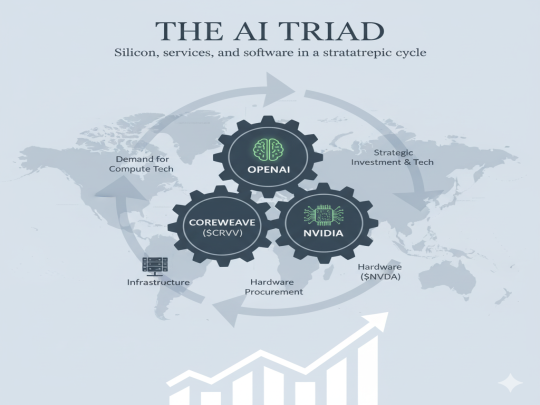Stock Market Update: S&P 500 Tops 6,300 as Nasdaq Hits New High on Strong Earnings
Stock Market Update: S&P 500 clears 6,300 and Nasdaq hits fresh peak, buoyed by Verizon’s beat and strength in Meta and Amazon. Alphabet and Tesla loom large ahead of key reports, as Bessent’s China talks dampen tariff worries.

- Early Tuesday US stock futures were little changed as investors assessed a strong start to Q2 earnings season, with the S&P 500 and Nasdaq coming off record highs.
- Monday's market saw the S&P 500 (+0.14%) close above 6,300 for the first time and the Nasdaq (+0.38%) also hit a new record, driven by tech strength and earnings optimism.
- The rally was supported by a 4% surge in Verizon after its earnings beat and gains in big tech names like Alphabet.
- Significant premarket movers Tuesday included GM (-4%) and Lockheed Martin (-8%) falling on disappointing aspects of their earnings reports. Medpace (+45%) and D.R. Horton (+7%) soared on strong results. Opendoor (+13%) continued its meme-stock rally. M&A speculation boosted rail stocks like CSX
- Regarding trade, Treasury Secretary Bessent confirmed upcoming talks with China and signaled flexibility on tariff deadlines, though other officials reiterated the Aug 1 deadline is firm. The EU is weighing countermeasures to the threatened 30% US tariff.
- Treasury Secretary Bessent called for a broad internal review of the Federal Reserve's non-monetary operations. The economic data calendar is light until Wednesday.
- The Q2 earnings season is off to a strong start, with over 85% of early S&P 500 reporters beating EPS estimates. Bank of America notes profits are tracking a 5% YoY gain.
- Company earnings included GM beating Q2 profit estimates, though its core profit fell over 31% year-over-year. Coca-Cola also beat Q2 expectations, but global sales volume slipped.
- Global markets Tuesday saw Europe open lower, weighed down by tech stocks. Asia closed mixed, with China gaining while Japan and South Korea fell.
- US Treasury yields ticked higher Tuesday morning (10-year around 4.396%) as investors awaited comments from Fed Chair Powell.
- Gold prices held steady Tuesday near a five-week high. Oil prices fell for a third day on concerns that escalating US-EU trade tensions could hurt demand.
- Investor sentiment is being supported by a strong start to earnings season, which is currently outweighing trade concerns, though some strategists warn of potential complacency.
The S&P 500 moved higher on Monday as investor confidence in corporate earnings outweighed concerns over the latest trade developments. The index notched its first-ever close above the 6,300 mark, while the Nasdaq also hit a record high, driven by enthusiasm ahead of key earnings reports from major tech companies.
Earnings season appears to be off to a robust start. According to data from FactSet, more than 85% of the S&P 500 companies that have reported so far have exceeded analysts’ expectations. Bank of America noted that earnings for the second quarter are currently tracking a 5% year-over-year increase, following the first week of results. This strong performance has bolstered sentiment, even as global markets remain wary of ongoing tariff tensions.
As of Tuesday morning, U.S. stock futures are little changed, with investors awaiting more earnings releases that could set the tone for the remainder of the week. The focus remains on whether the positive earnings momentum can continue to outweigh geopolitical and policy-related uncertainties.
US Market Previous Day:
The S&P 500 edged up 0.14% on Monday to close at 6,305.60, marking the first time the index has ended a session above the 6,300 level. The Nasdaq Composite outperformed, climbing 0.38% to finish at a record 20,974.17. Both benchmarks hit fresh intraday highs earlier in the day, driven by strength in major tech names such as Meta Platforms and Amazon. Meanwhile, the Dow Jones Industrial Average dipped slightly, losing 19.12 points, or 0.04%, to close at 44,323.07.
Verizon shares surged 4% after reporting stronger-than-expected second-quarter earnings, fueling hopes that upcoming corporate results will also come in solid. Alphabet gained over 2% ahead of its quarterly report due Wednesday, boosting optimism around the broader tech space. It, along with Tesla — the first of the “Magnificent Seven” mega-cap stocks to report this season — could play a critical role in driving market momentum if earnings beat forecasts.
US Futures Remain Flat:
- Dow Jones Industrial Average futures remained flat with decline of 0.13%
- S&P 500 futures showed meagre gains of 0.02%
- Nasdaq Composite futures fell by 0.06%.
Biggest Premarket Movers
- Opendoor Technologies: The online real estate startup popped more than 13%, extending a massive rally powered by retail traders targeting "meme stocks." The stock, often discussed on Reddit’s WallStreetBets forum, is up more than 500% this month, with trading volume on Monday surging to 1.9 billion shares, over 1,700% of its three-month average.
- General Motors: Shares tumbled nearly 4% despite the automaker beating sales and profit expectations in the second quarter. While its adjusted earnings before interest and taxes of $3.04 billion were higher than analysts estimated, the figure was down more than 31% from the same period a year ago.
- Lockheed Martin: The defense contractor dropped 8% after its quarterly revenue of $18.16 billion trailed the LSEG consensus estimate of $18.57 billion. Lockheed also reported a $1.6 billion loss related to some defense programs, with management citing a re-evaluation of the financial position of certain major legacy programs.
- Coca-Cola: The soft drink maker dipped in premarket trading. The slight decline occurred even after the company topped Wall Street estimates for both quarterly revenue and earnings and reiterated its full-year forecast.
- NXP Semiconductors: The Dutch semiconductor maker dropped 6% after its second-quarter sales declined due to slow demand from the automotive market. This weakness overshadowed an otherwise solid report where NXP beat LSEG analyst expectations on both the top and bottom lines.
- Steel Dynamics: Shares retreated nearly 2% after the steelmaker’s second-quarter results fell short of expectations. The company reported earnings of $2.01 per share, missing the Street's $2.10 estimate, and revenue of $4.57 billion, which also trailed the consensus for $4.76 billion.
- Medpace: The outsourced clinical development services provider soared more than 45% after its second-quarter net income and revenue both topped analyst estimates. The company also raised its full-year guidance. GAAP earnings of $3.10 per share and revenue of $603.3 million significantly exceeded FactSet consensus estimates.
- CSX, Norfolk Southern: Shares of CSX, a Jacksonville-based freight railway, rose about 4% on a Reuters report that it is in talks to hire financial advisors amid speculation about further consolidation in the industry. Shares of rival Norfolk Southern were marginally higher after The Wall Street Journal reported that Union Pacific is exploring a potential bid for the rail line.
- D.R. Horton: The homebuilder surged 7% after its fiscal third-quarter results came in well above expectations. The company reported earnings of $3.36 per share on revenue of $9.23 billion, surpassing FactSet analyst projections.
- PulteGroup: Shares popped 1% after the home construction company posted second-quarter earnings of $3.03 per share and revenue of $4.40 billion, both of which came in ahead of LSEG analyst estimates.
- Northrop Grumman: Shares jumped 3% after the defense company posted second-quarter revenue of $10.35 billion, topping the LSEG consensus estimate of $10.07 billion.
- Zions Bancorporation: Shares rose almost 3% after Zions reported second-quarter earnings of $1.63 per share, significantly beating the LSEG consensus estimate of $1.31. The bank's CEO also expressed increased optimism about growth in the second half of the year.
- Albertsons Companies: The grocery chain rose 2.2% after UBS upgraded the stock to a "buy" from "neutral" and raised its 12-month price target to $27 per share, implying a 35% upside.
- Agilysys: Shares sank 11% after the hospitality software company’s first-quarter EBITDA of $12.5 million lagged the FactSet consensus estimate of $14.0 million.
- Calix: The telecommunications firm rose 3% after its quarterly earnings of 33 cents per share easily topped analysts’ estimates of 21 cents, according to FactSet. Revenue also exceeded expectations.
Tariff Update:
U.S. Treasury Secretary Scott Bessent said on Tuesday that he will meet with his Chinese counterpart next week, signaling the possibility of extending the August 12 deadline for increased tariffs. Speaking to Fox Business, Bessent described U.S.-China trade relations as being “in a very good place,” and confirmed that discussions would take place in Stockholm on Monday and Tuesday. The statement comes amid broader uncertainty over the United States’ tariff strategy, particularly toward major trading partners.
On Monday, Bessent also commented on the administration’s upcoming tariff hike set for August 1, stating that it would apply additional pressure on countries to secure more favorable trade agreements with the U.S. His remarks implied that the deadline may be more of a negotiating tool than a hard cutoff, even as other officials, including Commerce Secretary Howard Lutnick, have doubled down on the idea that tariffs will go into effect as scheduled. Lutnick reiterated that while talks can continue after August 1, the tariffs would nonetheless begin on that date.
Across the Atlantic, the European Union is weighing its response as the threat of a 30% U.S. tariff on EU imports looms. According to EU diplomats, member states such as France and Germany are considering deploying the bloc’s “Anti-Coercion Instrument,” a powerful trade policy tool designed to deter external economic pressure. The potential countermeasures include limiting U.S. companies’ access to EU public tenders, imposing export and import restrictions, and curbing U.S. foreign direct investment in the region. While the White House has confirmed that the August 1 tariff deadline remains in place, it has also indicated that negotiations could continue beyond that date.
Key Economic Data/News:
In a Monday interview with CNBC, Treasury Secretary Scott Bessent called for a far-reaching internal review of the Federal Reserve, questioning the central bank’s overall effectiveness in fulfilling its mandate. He drew a comparison to the Federal Aviation Administration, suggesting that an agency performing similarly to the Fed would likely face significant scrutiny. Bessent later clarified via social media that his remarks were focused on the Fed’s “non-monetary policy operations,” though his comments align with the Trump administration’s broader criticisms of Fed Chair Jerome Powell for maintaining steady interest rates in recent months. During the same interview, Bessent also discussed trade policy, reiterating that the upcoming August 1 tariff deadline is intended to pressure trading partners into reaching more favorable agreements with the U.S.
While this week is relatively quiet in terms of economic data, investors will be watching for updates including June existing home sales on Wednesday, weekly initial jobless claims and new home sales data on Thursday, and durable goods orders on Friday.
Earnings Season/Company News:
On the corporate front, General Motors posted second-quarter earnings that surpassed analyst expectations, despite continued uncertainty around auto tariffs. The automaker reaffirmed its full-year guidance, which was adjusted in May to factor in a potential $4–$5 billion tariff impact. GM’s core profit declined by 31.6% to $3.04 billion, and the company reported vehicle sales of 974,000 in Q2—falling short of the 1 million projected by StreetAccount. Electric vehicle sales came in at 46,300 for the quarter.
Meanwhile, Coca-Cola also beat earnings and revenue estimates for the quarter, thanks largely to strong demand in Europe, which helped offset volume declines in other markets. Net sales rose 1% to $12.54 billion, with organic revenue up 5%. However, global unit case volume slipped 1%, with executives citing ongoing economic and geopolitical uncertainty as a drag on consumer confidence in some regions. For the full year, Coca-Cola narrowed its guidance for comparable EPS growth to 3%, while maintaining its forecast for 5%–6% organic revenue growth in 2025.
Global Market Trends:
Most sectors in Europe ended lower, with risk-sensitive technology stocks falling 1.4% and chemicals down 1.8%, dragging the Stoxx 600 index to a 0.57% loss. Investor sentiment remains cautious as tensions persist over U.S. President Donald Trump’s plan to impose a 30% tariff on goods imported from the EU beginning August 1. While the EU has expressed hope for a trade agreement ahead of the deadline, no resolution has been reached so far. In the absence of a deal, European policymakers are reportedly preparing potential retaliatory actions.
In Asia, markets closed mixed on Tuesday. Hong Kong’s Hang Seng Index rose 0.54% to finish at 25,130.03, and mainland China’s CSI 300 index gained 0.82% to close at 4,118.96. Japan’s Nikkei 225 erased earlier gains and slipped 0.11%, ending the session at 39,774.92, while the broader Topix index finished flat at 2,836.19. South Korea’s Kospi declined 1.27% to 3,169.94, and the small-cap Kosdaq fell 1.06% to 812.97. Meanwhile, Australia’s S&P/ASX 200 edged up 0.1% to settle at 8,677.20.
Debt Market:
In the debt markets, U.S. Treasury yields moved slightly higher as investors awaited remarks from Federal Reserve Chair Jerome Powell. The 10-year Treasury yield rose by more than 2 basis points to 4.396%, while the 2-year yield inched up over 1 basis point to 3.871%. The 30-year yield also climbed more than 2 basis points, reaching 4.966%. Powell’s upcoming speech in Washington is expected to offer further insights into the central bank’s monetary policy direction.
Commodities:
Gold prices held steady on Tuesday as investors locked in profits following a recent rally that pushed the metal to a five-week high. While prices retreated slightly due to profit-taking, they remained elevated amid continued uncertainty ahead of the August 1 tariff deadline set by U.S. President Donald Trump. The precious metal is likely to maintain a bullish trend, with strong resistance identified near $3,420 and support around $3,350. Attention is also turning to the U.S. Federal Reserve’s monetary policy meeting scheduled for next week, where the central bank is widely expected to keep interest rates steady for now, with possible rate cuts beginning in October. Gold generally benefits from a low-interest-rate environment and periods of geopolitical or economic instability, both of which continue to underpin its strength.
Oil prices declined for a third consecutive session on Tuesday, driven by concerns that the intensifying trade tensions between the United States and the European Union could dampen economic growth and curb fuel demand. While the broader market faced downward pressure, stronger distillate margins — bolstered by persistently low inventories — provided some support to crude prices. According to PVM Oil analyst John Evans, the decline in oil might have been steeper if not for the resilience seen in the distillate segment. Adding to the sentiment, a Reuters poll of analysts suggested that U.S. crude inventories likely dropped by about 600,000 barrels in the week ending July 18, which could influence short-term price direction.
Market Sentiment:
Investors are turning their attention to a pivotal week of second-quarter financial results. So far, more than 60 S&P 500 companies have reported earnings, with over 85% of them surpassing analysts’ estimates, according to data from FactSet. However, the focus is not just on the numbers. Market participants are paying close attention to corporate commentary around macroeconomic certainty, the effects of tariffs, and how artificial intelligence is influencing demand and capital spending.
The performance of megacap stocks is expected to play a key role this earnings season. FactSet’s John Butters noted that the so-called “Magnificent Seven” are projected to deliver earnings growth of 14% in the second quarter. In contrast, the remaining 493 companies in the S&P 500 are anticipated to show much slower growth, around 3.4%. Investor confidence in this earnings season remains high, even as the White House reaffirmed its stance on tariffs over the weekend.
Despite ongoing risks related to trade tensions and inflation, the stock market has shown unusual calm. The CBOE Volatility Index (VIX) has remained subdued throughout the month. However, that tranquility may not last. According to Mark Hackett, chief market strategist at Nationwide, the coming weeks could bring sharp market reactions. He pointed to several key events — including the upcoming FOMC meeting, GDP data release, the August 1 tariff deadline, and a flood of earnings — as potential catalysts. “We’re in a window where calm can quickly turn to complacency,” Hackett warned.



